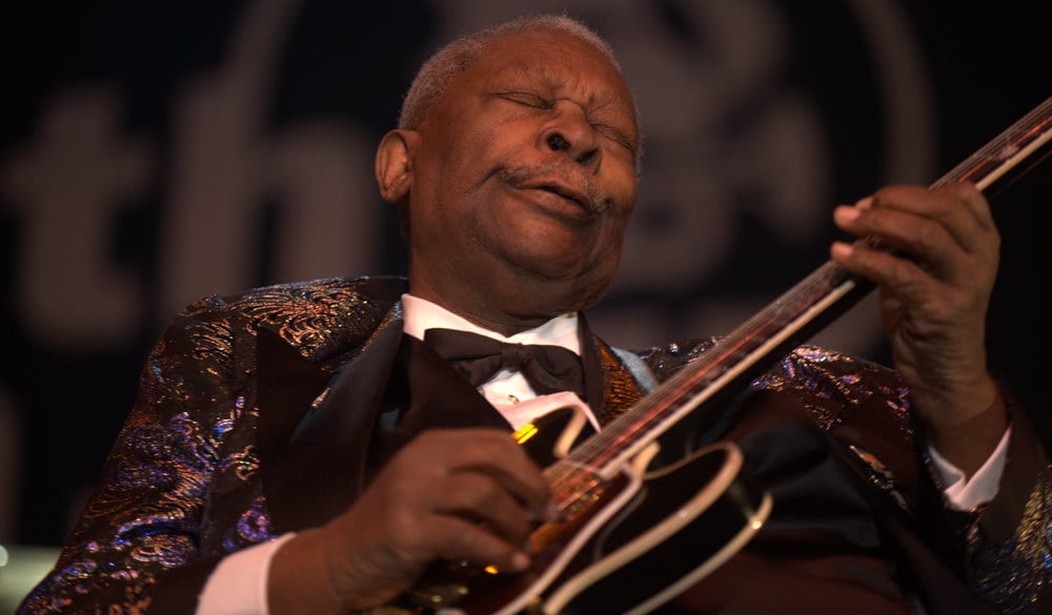Prior to the early 1960s British Invasion, a great many young American music lovers had little to no exposure to the authentic black blues music that so inspired the biggest names of the invasion, like The Rolling Stones and The Animals. While The Beatles did cover the music of black artists, their choices were more along the lines of rock: Chuck Berry and Little Richard classics like “Roll Over Beethoven” and “Long Tall Sally,” for example.
In the later 1960s, black blues broke big time, in great part due to promoters like Bill Graham, who started booking black bluesmen for shows that were being flocked to by the largely homogenized rock audiences of the day.
Suddenly, names like John Lee Hooker and Muddy Waters began to appear on bills for upcoming concerts headlined by artists like Country Joe and the Fish. Performances by one of the Kings—B.B., Albert, or Freddie— became mid-bill mainstays on shows topped by mega-stars like Steve Miller. By 1967, four years give-or-take after the invasion, the emergence of black blues and blues-rock was thoroughly implanted within the panoply of rock stardom in the minds of concertgoers.
Taking a step back, however, it must be noted that it was The Rolling Stones who first brought approximations of authentic black blues home to mass white audiences.
“Confessin’ The Blues,” The Rolling Stones
If African-American rhythm and blues (not the derivative blue-eyed soul of white blues and R&B) sounded foreign to the ears of suburban white baby boomers accustomed to a heavy rotation of the Beach Boys and Elvis Presley’s cleaner-cut post-military service repertoire, the Stones did much to rectify the situation.
Rendered with a noticeable studio echo, “Confessin’” starts out lonely and lean. Mick Jagger’s plainspoken admission of obsession coupled with his haunting harp solo combine to evoke a man thoroughly down with the emotional condition known as the blues.
A lifeblood bottom carried in usual top form by bassist Bill Wyman makes clear: The Fab Five, called “Neanderthals” at the time, had done their homework.
“Red House,” Jimi Hendrix
https://vimeo.com/251237376
The blues always existed for black audiences and blues aficionados; by 1967 it had been counterculturally mainstreamed. The fire was lit, and Jimi Hendrix’s performance of “Red House” burned brightly. Included in the English version of the album Are You Experienced, “RH” shared grooves with the groundbreaking debuts of “Purple Haze” and “Foxy Lady,” and only later showed up stateside in 1969’s Smash Hits.
Flanked by performances of the heaviest psychedelia ever recorded, the virtuoso slow-to-mid-tempo blues number was one of the most scorching twelve-bars most white audiences had ever had the pleasure of hearing.
Rock journalism was blown away, as they often were with Jimi, but bluesman John Lee Hooker had the best take: “That ‘Red House’, that’ll make you grab your mother and choke her! Man, that’s really hard, that tears you apart. He could get down, he could mash it, yeah, Lord! He had so many blues.”
“Payin’ the Cost to Be the Boss,” B.B. King
It would be roughly three years later that blues legend B.B. King’s “The Thrill is Gone” would win a Grammy for Best Male R&B Performance (1970). But the man who made his guitar “Lucille” a household name had already earned the title “King of the Blues.” In 1968 he would write a blues song for the ages: “Payin’ the Cost to Be the Boss.”
In this television screengrab from 1987, he and Lucille bring it for Johnny Carson’s Tonight Show audience. (Note: Lucille was not one specific guitar, but the affectionate nickname B.B. gave to the modified Gibson ES-335-345 hollow-body electrics he favored.)
Worth mentioning is the performance of the Tonight Show Band that night. While it’s not clear from the clip whether Doc Severinsen or Tommy Newsom was conducting, B.B. could not have asked for a more propulsive, swinging chart.
“Down in Mississippi,” Jimmy Reed
Down in Mississippi where cotton grow tall,
get arrested for trouble you got to call the hound dog
Let’s take another step back to the roots of the blues. At the height of the British Invasion (1964) a revered bluesman who’d made his name with hits like “Big Boss Man” and “Bright Lights, Big City” released a compilation album of some of his lesser-known recordings, More of the Best with Jimmy Reed.
Included was a track Reed co-wrote with bassist Al Smith that expertly captures what the down-and-dirty blues is all about. Listening to “Down in Mississippi” you can feel the poverty, imagine the defacto oppression, and appreciate the resilient spirit of the pre-1960s black experience. Inspired by Reed’s evocative harp playing, it’s easy to envision “Big Muddy” rolling through the cotton fields
Reed was cited by the Stones as “major influence.”
“Blues Power,” Albert King
Perhaps no single moment in the history of later-sixties popularization of black blues for white audiences is more signatory than the live recording of blues guitar wizard Albert King at Bill Graham’s Filmore in San Francisco. Included on 1968’s Live Wire Blues Power was a tune that riveted all who heard it.
It wasn’t like King wasn’t on the map already. His 1967 album Born Under a Bad Sign had climbed to #49 on the Billboard R&B Chart, and its title track was eventually inducted into the Blues Foundation Hall of Fame.
In “Blues Power,” the riffs, the tones, the passion, and King’s absolute mastery of the twelve-bar galvanized the house and sent blues hounds into paroxysms of ecstasy.
And he did it in one live take.
“Wee Wee Hours,” Eric Clapton
No chronicle of the impact of black blues on mid-to-late 1960s pop music would be complete without mention of Eric Clapton.
On the occasion of Chuck Berry’s sixtieth birthday in 1986, some of the biggest names in rock, blues, and pop convened at the Fox Theater in St. Louis to pay tribute to the creator of “Johnny B. Goode” and a veritable treasure trove of other rock classics.
A documentary covering two evenings of performances featuring stellar renditions of Berry’s catalog culminated in Hail, Hail Rock and Roll, rightly considered one of the best roc-docs ever made.
Just when fans might have thought it could not get any better, Clapton stepped up and tore through a text-book-killer version of Berry’s twelve-bar classic. The epic solo wowed the house, including Berry himself, Keith Richards, and Robert Cray.
It would be impossible in one post to credit all of the musicians and bands that played roles in the monumental 1960s crossover of black blues to mass white audiences. To cite Texas bluesman Johnny Winter, Howlin’ Wolf, John Mayall and the Bluesbreakers, and the aforementioned Muddy Waters and John Lee Hooker is to name but a few.
Suffice it to say that music lovers all over the world had been blessed with more than a passing acquaintance with this uniquely African-American contribution to our culture. They’d come down with a bad case of the blues—and loved every minute of it!









Join the conversation as a VIP Member